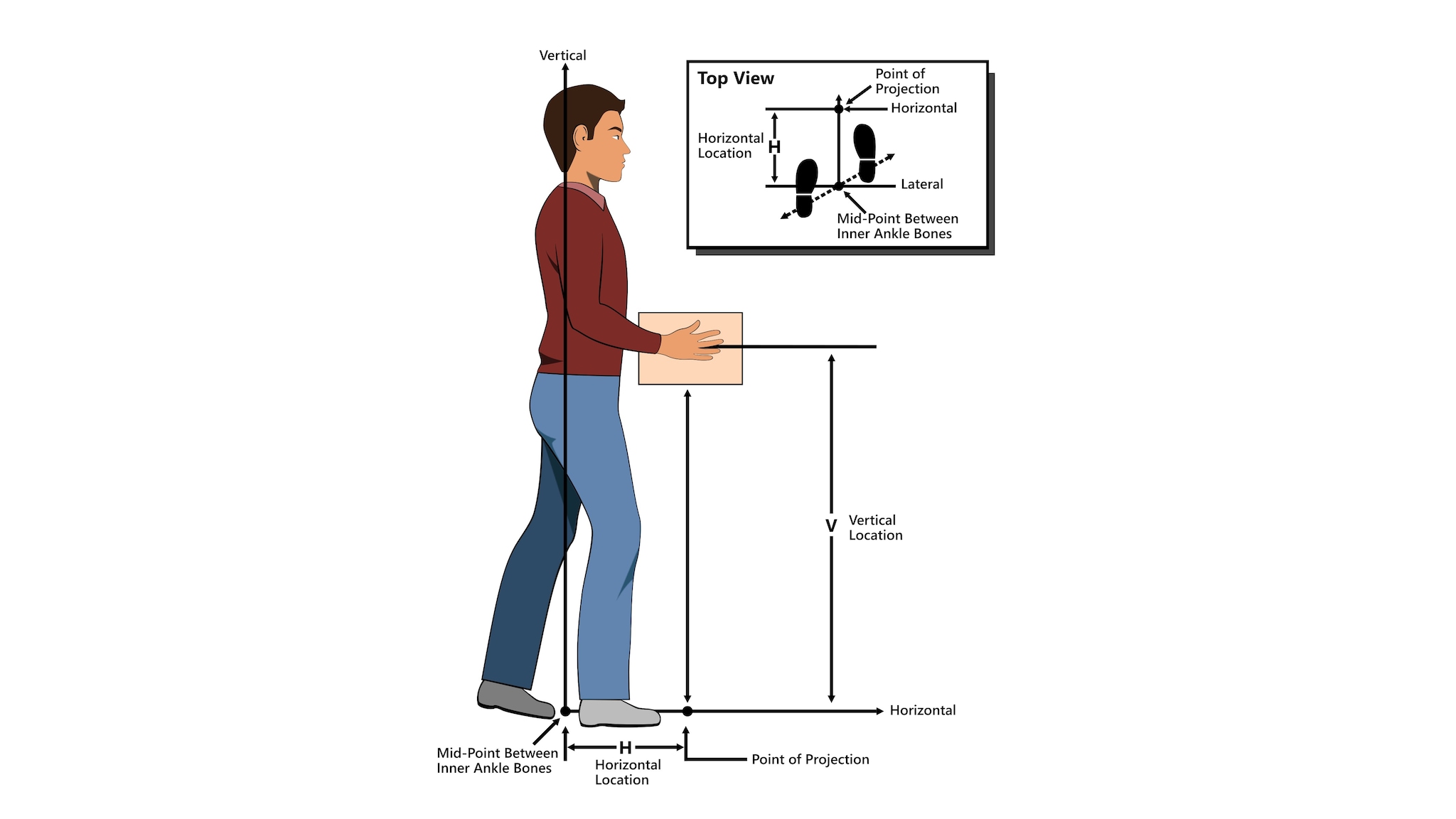Key points
- The Revised NIOSH Lifting Equation (RNLE) calculates the risk for back injuries from two-handed lifting tasks.
- The RNLE Applications Manual can help you understand how to use the RNLE for preventing musculoskeletal injuries from lifting tasks.
- You can download the NLE Calc application to easily use the RNLE.

The Revised NIOSH Lifting Equation (RNLE)
The Revised Lifting Equation (RNLE) is a tool to calculate risk for work-related musculoskeletal disorders (WMSDs). The equation can be used to calculate both single and multiple manual lifting tasks. Using the equation can reduce the incidence of low back injuries in workers.
NIOSH created the RNLE because many workers are responsible for manually lifting and moving objects on the job. These workers are in numerous occupations and industries. Exposure to repetitive lifting puts workers at risk for developing WMSDs. Understanding how much workers can safely lift is important to preventing those injuries.
Key benefits of using the RNLE
The RNLE helps employers make informed decisions about mitigating potential hazards to their workers' musculoskeletal health. The RNLE benefits employers and safety professionals by:
- Providing guidelines for designing safe lifting tasks
- Serving as a risk assessment tool
- Helping raise workers' awareness about their job tasks
- Collecting quantitative lifting data for research
How to use the RNLE
NLE Calc app
The NLE Calc app is a NIOSH mobile application based on the RNLE to help practitioners and researchers determine recommendations for two-handed manual lifting tasks.
The app streamlines the process of using the RNLE by allowing users to simply input data.
This app is one of the few mobile apps that can calculate Composite Lifting Index (CLI) for multiple tasks.
Download the NLE Calc app
Use the links below, or search for NLE Calc on the Apple App Store or Google Play Store.
Using the app
Refer to the RNLE Applications Manual to learn how to use the app.
Guidelines
Key variables
The equation has users input specific measurements, including:
- Weight of the object being lifted
- Horizontal Location of the hands away from the mid-point between the ankles
- Vertical Location of the hands above the floor
- Vertical Travel Distance of the hands between the origin and destination of the lift
- Asymmetry Angle of how far the object is displaced from the front of the body
- Frequency of the lifting task
- Duration of all lifting tasks and rest time in an 8-hour workday
- Coupling quality of gripping or grasping the object while lifting

Interpreting results
The equation provides specific estimates to help understand how much you can lift safely.
RNLE and NLE Calc app outputs
- Lifting Index (LI) is the relative estimate of the physical stress associated with a single manual lifting task.
- Composite Lifting Index (CLI) is used as an equation for jobs that require multiple lifting tasks. The CLI is a calculation of the collective demands from different lifting tasks.
- Recommended Weight Limit (RWL) is the amount that most workers can lift during a work shift without the risk of a WMSD. Common WMSDs that workers could develop include low back pain.
The RWL is the principal output of the RNLE.
NIOSH recommends using the LI or CLI to interpret results in estimating risk from lifting.
- NIOSH recommends that the LI or CLI be equal to or lower than 1.0.
- Learn more about the relationship between the LI and some WMSDs.
- Use the Elements of Ergonomics Programs to reduce risk.
- Fox B., Lu M., Occhipinti E. and Jaeger M.: Understanding outcome metrics of the revised NIOSH lifting equation. Applied Ergonomics 81 (2019) doi.org/10.1016/j.apergo.2019.102897
